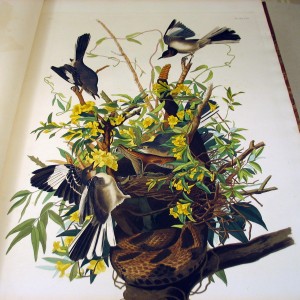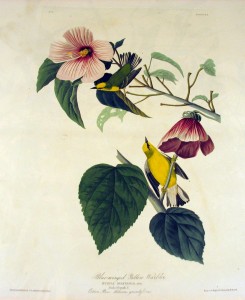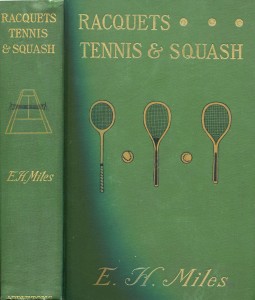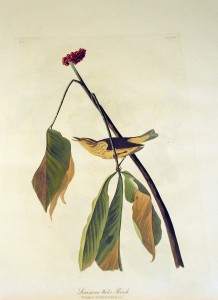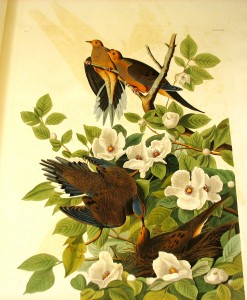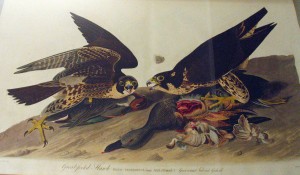 “The Purple Martin makes its appearance in the City of New Orleans from the 1st to the 9th of February . . . and is then to be seen gambolling through the air, over the city and the river, feeding on many sorts of insects, which are there found in abundance at that period.
“The Purple Martin makes its appearance in the City of New Orleans from the 1st to the 9th of February . . . and is then to be seen gambolling through the air, over the city and the river, feeding on many sorts of insects, which are there found in abundance at that period.
It frequently rears three broods whilst with us. I have had several opportunities, at the period of their arrival, of seeing prodigious flocks moving over that city or its vicinity, at a considerable height, each bird performing circular sweeps as it proceeded, for the purpose of procuring food . . . at the Falls of the Ohio, I have seen Martins as early as the 15th of March, arriving in small detached parties . . . by the 25th of the same month, they are generally plentiful . . . at St. Genevieve, in the State of Missouri, they seldom arrive before the 10th or 15th of April . . . at Philadelphia, they are first seen about the 10th of April. They reach Boston about the 25th, and continue their migration much farther north, as the spring continues to open.
. . . These birds are extremely courageous, persevering, and and tenacious of what they consider their right. They exhibit strong antipathies against cats, dogs, and such other quadrupeds as are likely to prove dangerous to them. They attach and chase indiscriminately every species of Hawk, Crow, or Vulture, and on this account are much patronized by the husbandman. They frequently follow and tease an Eagle, until he is out of sight of the Martin’s box.
. . . The note of the Martin is not melodious, but is nevertheless very pleasing . . . [and is] among the first that are heard in the morning, and are welcome to the sense of every body. The industrious farmer rises from his bed as he hears them . . . the husbandman, certain of a fine day, renews his peaceful labors with an elated heart. The still more independent Indian is also fond of the Martin’s company. He frequently hangs up a calabash on some twig near his camp, and in this cradle the bird keeps watch, and sallies forth to drive off the vulture that might otherwise commit depredations on the deer-skins or pieces of venison exposed to the air to be dried. The humbled slave of the Southern States takes more pains to accommodate this favourite bird. The calabash is neatly scooped out, and attached to the flexible top of a cane, brought from the swamp, where that plant usually grows, and placed close to his hut. It is, alas! to him a mere memento of the freedom which he once enjoyed; and, at the sound of the horn which calls him to his labor, as he bids farewell to the Martin, he cannot help thinking how happy he should be, were he permitted to gambol and enjoy himself day after day, with as much liberty as that bird.”
–J. J. Audubon, Ornithological Biography, I (1831), 112-119.

